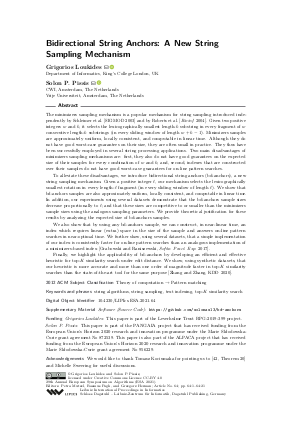LIPIcs.ESA.2021.64.pdf
- Filesize: 1.31 MB
- 21 pages

 Creative Commons Attribution 4.0 International license
Creative Commons Attribution 4.0 International license




Feedback for Dagstuhl Publishing